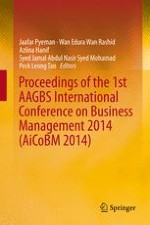2016 | OriginalPaper | Chapter
9. The Relationships Between Talent Management Practices, Employee Engagement, and Employee Retention in the Information and Technology (IT) Organizations in Selangor
Authors : Nurul Ezaili Alias, Norzanah Mat Nor, Roshidi Hassan
Published in: Proceedings of the 1st AAGBS International Conference on Business Management 2014 (AiCoBM 2014)
Publisher: Springer Singapore
Activate our intelligent search to find suitable subject content or patents.
Select sections of text to find matching patents with Artificial Intelligence. powered by
Select sections of text to find additional relevant content using AI-assisted search. powered by
